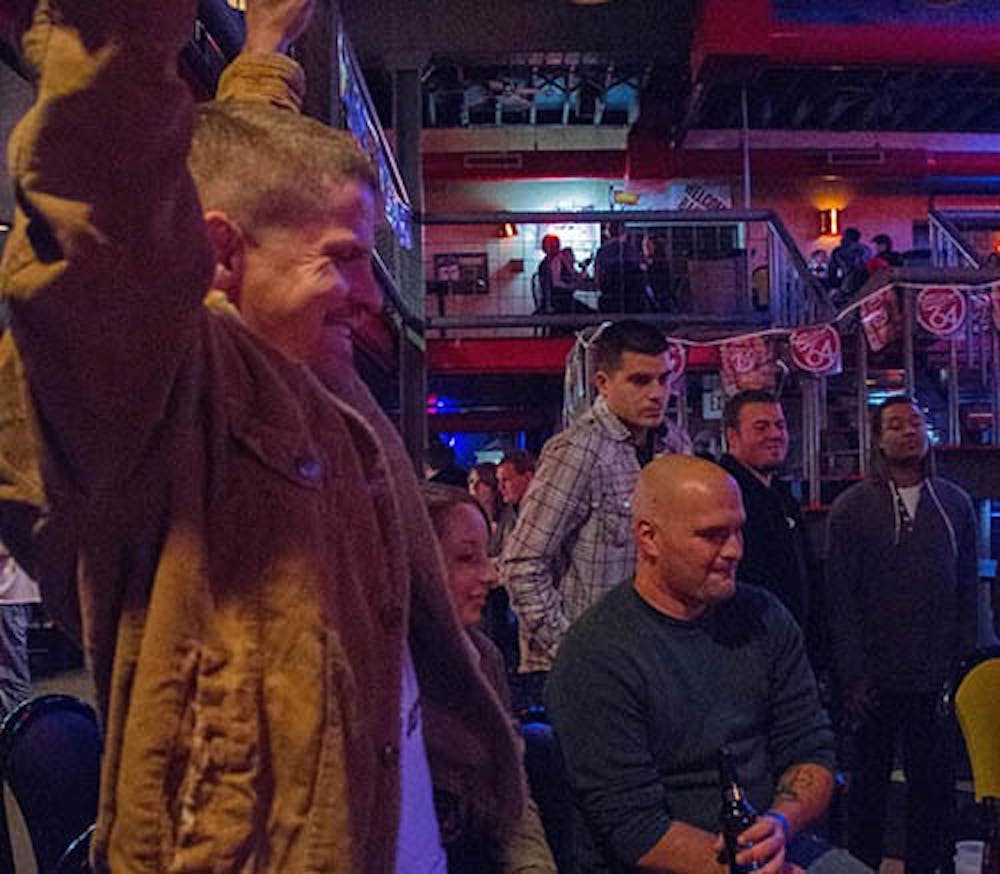Bars and clubs in the Village are taking a second look at their safety precautions after a nightclub fire killed more than 230 people in southern Brazil.
According to CNN, police arrested three people in connection with the fire, which authorities believe to have started at about 2:30 a.m. Sunday when a band’s pyrotechnic show ignited insulation material. About 2,000 people were estimated to be inside the club, although the maximum capacity was 1,000 people.
David Miller, chief inspector of the Muncie Fire Department, said Indiana follows the international fire code to prevent situations like this.
“When you have a situation like you did there, and hundreds of people are wanting to get out, you need every exit that you can get,” Miller said. “A lot of times people say ‘That’s not going to happen to me’ or ‘This one exit isn’t going to make that much of a difference.’ Well, it really does.”
Justin Wrightsman, the general day manager at the Locker Room, said their main safety precaution is having two clearly labeled exits, one at the front where patrons enter and another in the back hallway near the exit.
Locker Room employees also attend a meeting about once a month in which they go over safety procedures, Wrightsman said.
The patio capacity is 50 to 75 people, seating capacity is 100 people and the overall capacity is “more like in the 300’s. It’s in a book somewhere,” Wrightsman said.
Wrightsman said the only time they really need to enforce capacity is when they get busy during Homecoming and St. Patrick’s Day. He said the general manager will tell the bouncer if he feels the establishment is too full, and then they will restrict access.
“This year at Homecoming we had probably 75 to 100 people on the patio,” Wrightsman said. “It’s just so hard to count heads because people are in the bathrooms, we can’t really send the guys in the bathroom to count the girls, and people move around so much.”
Neal Soley, a manager at Be Here Now, said in an email that the concert venue uses a Department of Human Resources-approved fire plan that is practiced monthly. Representatives from Folly Moon, Dill Street Bar and Grill, Cleo’s Bourbon Bar and D Luxe Bar and Lounge could not be reached by the Daily News on Monday.
Miller said it is not uncommon for owners to underestimate the importance of capacity.
“A lot of times when we go in to set an occupancy load, we have people say ‘Well, I don’t get this many people in here, [so] it shouldn’t be this much,’” Miller said. “It’s not based on how many people you might have, it’s based on how many people you could have at one given time.”
Senior business administration major Max Murdoch said he goes to the bars in the Village about two to three times a week, but has never been asked not to enter a bar because they are over capacity.
Murdoch also said he isn’t sure if any bars have a second entrance, but that would be a good preventative measure.
In general, Muncie’s inspectors look for an address visible from street, fire extinguishers, hood systems in restaurants, sprinkler systems and extension cords. All the paperwork for these items being serviced and tested have to be on the premises, Miller said.
If a problem is identified, the inspector issues a request for the business owner to fix it within 30 days. If they refuse, eventually the case will be filed at the city court.
Miller said that the Village was inspected late last spring and was given a “clean bill of health” and that the businesses have “always come through and rectified the problem.”
But since the Village changes often and businesses are moving in and out, Miller said he can’t guarantee that an inspector wouldn’t walk in and find a problem.
“The city has expanded a little bit, and every time we turn around we have a new restaurant popping up it seems, but we still have the same amount of people, so we’ve gotten behind to the point where we are looking more at 14 to 16 months that we get to everyone one time around.” Miller said.
According to the Indiana Department of Homeland Security, inspections every 12 months are ideal.
“[A fire like in Brazil] could really happen anywhere,” Miller said. “I think that’s one of the positives to having a professional fire bureau. A lot of places need to cut down somewhere, but you have to be reactive instead of being proactive. Hopefully it doesn’t get lost in the shuffle that we need prevention.”


